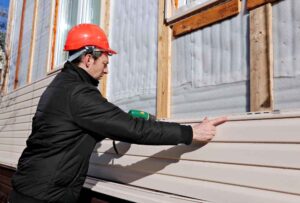Introduction
Welcome to a light-hearted exploration of commercial roofing solutions! In this blog, we will uncover the mysteries and intricacies of the roofing industry, focusing on the fascinating world of commercial roof structures. We’ll delve into the ever-evolving construction industry trends, discuss the importance of eco-friendly roofing options, and provide insights into the different types of commercial roofing materials and solutions available. So, put on your hard hat and let’s dive into this practical world together!
The Growing Commercial Roofing Market
As the construction industry continues to expand, so does the demand for commercial roofing solutions. According to a report by Global Market Insights, the commercial roofing materials market is projected to exceed $170 billion in revenue by 2025. This exponential growth can be attributed to the increasing demand for energy-efficient roofs and sustainable building materials.
Rise of Single-Ply Roof Systems
Out of all commercial roofing systems, single-ply roofs are widely popular and account for over 55% of the total square footage installed each year, as revealed by a study from the National Roofing Contractors Association. Single-ply roofs come in various types such as TPO (Thermoplastic Olefin), EPDM (Ethylene Propylene Diene Monomer), and PVC (Polyvinyl Chloride). Each offers its unique benefits and advantages, making them a preferred choice for commercial building owners.
TPO: The Versatile Contender
TPO roofing has gained considerable popularity in recent years due to its versatility and ecologically friendly features. This roofing material provides excellent energy efficiency, reflecting sunlight to reduce heat absorption. TPO roofs are also highly durable, resistant to punctures, and capable of withstanding extreme weather conditions. With its cost-effectiveness and easy installation process, TPO is a top choice for many commercial roofing projects.
EPDM: The Resilient Champion
EPDM roofing, also known as rubber roofing, boasts exceptional durability and longevity. This synthetic rubber material offers superb resistance against UV rays, ozone, and other environmental elements. With its waterproofing properties and ease of installation, EPDM roofs are often a go-to choice for commercial buildings. Additionally, EPDM roofs are highly resistant to punctures and abrasions, making them ideal for rooftop gardens and recreational spaces.
PVC: The Stalwart Shield
PVC roofing, made from a high-quality thermoplastic material, is renowned for its exceptional strength and durability. PVC roofs are highly resistant to fire, chemicals, and impact, making them a reliable choice for commercial properties. These roofs also provide excellent weather resistance, preventing moisture infiltration and protecting the building’s interior from potential damage. PVC roofing systems are easy to maintain and offer long-term cost savings for building owners.
The Financial Benefits of Sustainable Roofing
As the world becomes more conscious of the environmental impact of various industries, sustainable commercial roofing solutions have gained significant traction. According to the Whole Building Design Guide, sustainable roofing options can reduce energy costs by up to 15%. This showcases the financial benefits of implementing eco-friendly roofing systems for commercial buildings.
Energy-Efficient Roofing Materials
Energy-efficient roofing materials play a pivotal role in reducing overall energy consumption in commercial buildings. With the rising costs of energy, it has become crucial for businesses to optimize their energy usage. Implementing roofing materials that reflect sunlight, reduce heat absorption, and improve insulation can result in substantial energy savings.
Eco-Friendly Roofing Systems
In addition to energy-efficient materials, eco-friendly roofing systems offer numerous benefits to commercial building owners. Green roofs, for example, provide natural insulation, improve air quality, reduce stormwater runoff, and contribute to urban greening efforts. Solar roofs, on the other hand, harness the power of the sun to generate clean and renewable energy, reducing reliance on traditional energy sources.
Commercial Roofing Solutions and Your Business
Now that we’ve explored the various types of commercial roofing materials and the financial benefits of sustainable solutions, let’s discuss how commercial roofing can positively impact your business.
Longevity and Durability
Investing in professional roofing services and selecting the right roofing materials ensures the longevity and durability of your commercial building. With a sturdy roof overhead, you can protect your business operations and valuable assets from potential damage caused by leaks, water intrusion, and harsh weather conditions. A reliable roof not only safeguards your investments but also contributes to the overall aesthetics and professionalism of your establishment.
Reduced Maintenance and Repair Costs
Opting for high-quality roofing materials and employing proper maintenance practices can significantly reduce long-term repair and maintenance costs. Regular inspections, timely repairs, and routine maintenance help identify and address potential issues before they escalate into major problems. By staying proactive, you can save your business from costly repairs and unexpected roof failures, ensuring smooth operations throughout the year.
Enhanced Energy Efficiency
Commercial buildings often consume substantial amounts of energy, leading to high utility costs. By implementing energy-efficient roofing solutions, you can significantly reduce your energy consumption and subsequently lower your utility bills. This not only benefits your business financially but also showcases your commitment to sustainable practices, appealing to environmentally conscious customers and stakeholders.
Frequently Asked Questions
1. What are the most common types of commercial roofing materials?
The most common types of commercial roofing materials include single-ply membranes (such as TPO, EPDM, and PVC), built-up roofing (BUR), metal roofing, and modified bitumen roofing. Each material offers different benefits, depending on factors such as durability, cost-effectiveness, and energy efficiency.
2. How long do commercial roofs typically last?
Commercial roofs have varying lifespans depending on the type of roofing material used and the maintenance practices implemented. On average, a well-maintained commercial roof can last anywhere between 20 to 50 years. Regular inspections and proper maintenance can help extend the lifespan of the roof, ensuring long-term protection for your business.
3. Can I install a new commercial roof over an existing one?
In some cases, it is possible to install a new




